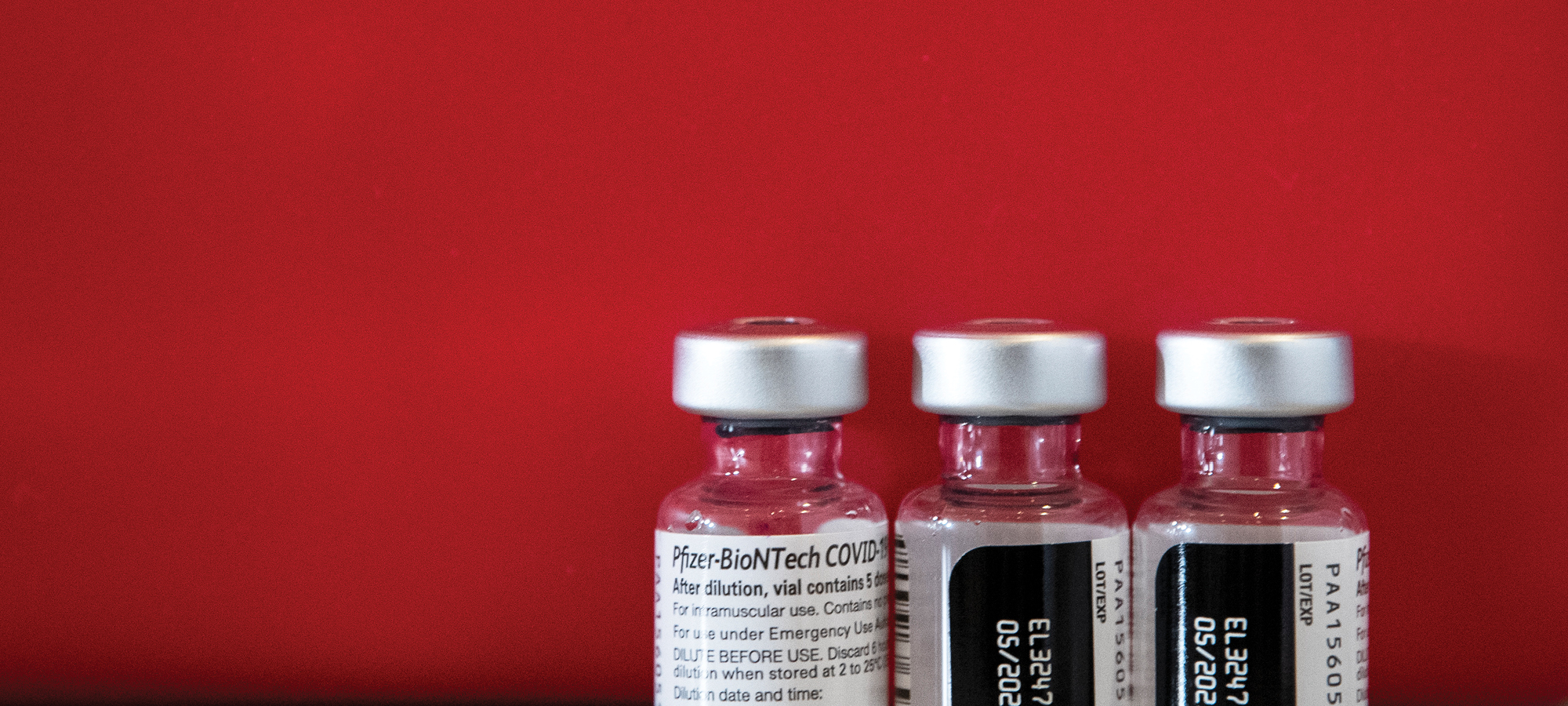
In a new paper, Sarah Cobey and her coauthors outline vaccine distribution strategies aimed at making the most of every dose. (Caroline Brehman/CQ Roll Call/Newscom)
Sarah Cobey is putting her infectious disease expertise to work against the pandemic.
At the start of January 2020, what we now know as COVID-19 was still a cluster of pneumonia cases in Wuhan, China—but Sarah Cobey already had her eye on it. Two weeks later, she watched with mounting alarm as the illness appeared in Thailand. “The third week of January,” she remembers, “thatʼs when I got really depressed.”
Long before most Americans began buying up disinfecting wipes or heard the name “Fauci,” Cobey was privately performing grim back-of-envelope calculations of how many cases were circulating undetected in the United States. From the start of the pandemic, she has been trying to get ahead of the virus and urging others to do the same.
Cobey, an associate professor in the Department of Ecology and Evolution, is an evolutionary biologist, an epidemiologist, a disease modeler, and a scholar of vaccines—a range of interests well tailored to address the current crisis. For nearly a year, she has been focused on SARS-CoV-2, leading a group of modelers advising the State of Illinois on its public health response. Now she is turning her attention to questions about vaccines, including how best to allocate doses as they become available and how vaccination will interact with the virusʼs evolution.
Modeling the spread of a new disease through a population with no immunity is, in theory, a fairly uncomplicated task—in fact, Cobey says, itʼs “how every textbook infectious disease chapter starts.”
But the real-world case of COVID-19 has been anything but simple. A model is only as good as the data that informs it, and much of the data available to researchers was (and in many cases remains) spotty, due to limited testing at the start of the outbreak, inconsistencies in collecting and sharing numbers, and the bedeviling problem of asymptomatic spread.
Cobey is rueful as she reflects on what might have been. Surveillance testing—that is, regularly testing a representative sample of a population—“is the low-hanging fruit that has been really deprioritized throughout this pandemic,” she says. Allocating testing resources toward a well-designed surveillance program “would tell us so much.”
Sheʼs not optimistic that the United States will fix its testing problems anytime soon, but she hopes vaccine rollout will improve.
In January Cobey, along with researchers at Harvard and the University of Colorado, published a paper in Science examining which age groups in the general population should be first in line to receive a COVID-19 vaccine—after the highest-risk groups, such as health care workers and nursing home residents, get their doses.
This kind of prioritization is “obviously not just a scientific problem,” Cobey says. Itʼs “a moral and social problem, and yet the science can inform which strategies will be most effective for different moral outcomes.”
Vaccines can work in different ways. For instance, they can prevent severe illness or they can prevent infection and transmission. In the first case, a vaccinated person exposed to the virus may not feel sick but still carries the virus and can spread it to others; in the second, a vaccinated person doesnʼt become infected and canʼt spread the virus.
Certain vaccines are thought to be “all-or-nothing” (that is, a given person who receives the vaccine is either protected fully or not at all). Others are “leaky” (that is, they offer recipients only partial protection). Often they are a combination of both—in fact, this is likely true of the two approved COVID-19 vaccines, though we donʼt yet know for certain.
Cobey and her colleagues tested the many possible combinations and permutations of leaky, all-or-nothing, illness-preventing, and transmission-blocking vaccines. In addition, their model considered how widespread transmission would be during vaccine rollout, and how quickly doses could be administered.
Among the teamʼs findings: in most scenarios, the best option is to vaccinate adults over 60 if the goal is to minimize mortality and years of life lost. If the goal is to reduce the number of infections and the vaccine succeeds at blocking transmission, then adults 20–49 should receive priority.
Notably, in most scenarios, the researchers did not find significant benefit to prioritizing vaccines for children, who, for reasons still unknown, seem not to be major drivers of transmission for the novel coronavirus. That stands in stark contrast to flu—in normal times, one of Cobeyʼs areas of research focus. Children are certain to play a key role in reducing or even extinguishing flu in the future, when the holy grail of flu research, a universal vaccine, becomes available. In fact, she says, “you probably only need a universal flu vaccine to work really well in kids, since kids drive so much influenza.”
Cobey expects that her work on flu and COVID-19 will dovetail more and more in the years to come: the Pfizer and Moderna vaccines use the same “platform”—mRNA—already being tested in some early universal flu vaccines. Rather than supplying weakened versions of a live virus, these mRNA vaccines give our bodies a sneak preview of what a characteristic SARS-CoV-2 protein looks like, allowing us to develop an immune response thatʼs ready and waiting in the event of infection.
“What we learn about these SARS-CoV-2 vaccines will be really, really useful for universal flu vaccines,” Cobey says. Both face similar challenges: namely, evolving viruses and individual differences in immune history that can affect vaccine efficacy. Still, she sees the possibility for better vaccine development as one of the rare bright spots of the COVID-19 era.
“This pandemic has laid bare how constrained our surveillance capacity is in this country for detecting new pathogens, and thatʼs sad—and that, of course, makes it more likely that weʼll have true pandemics,” she says—once again, thinking ahead.
